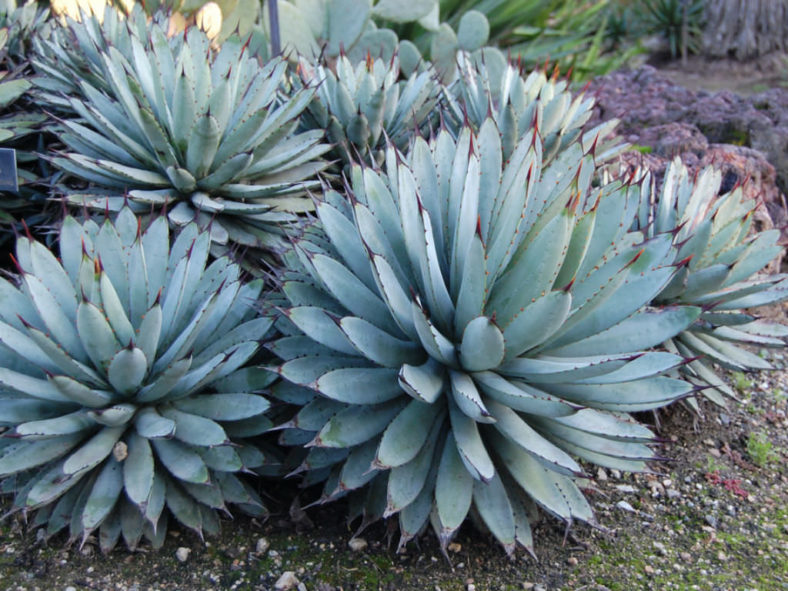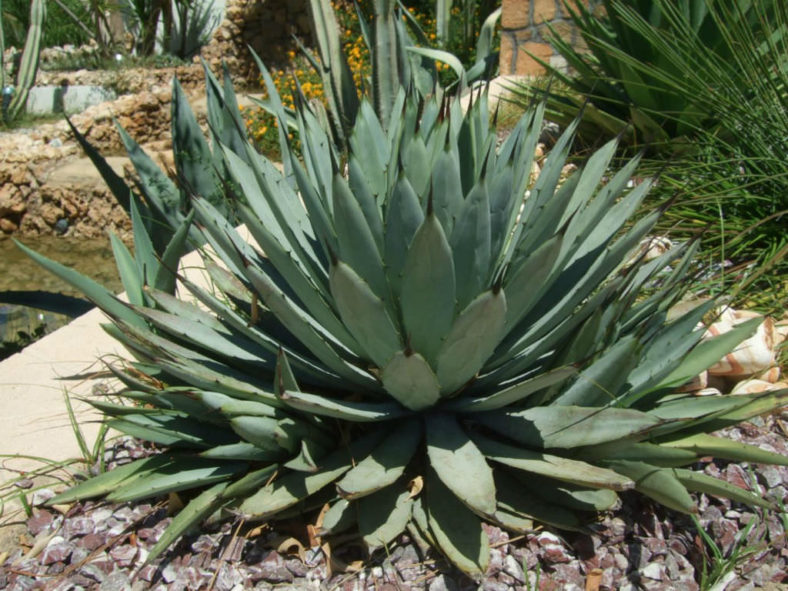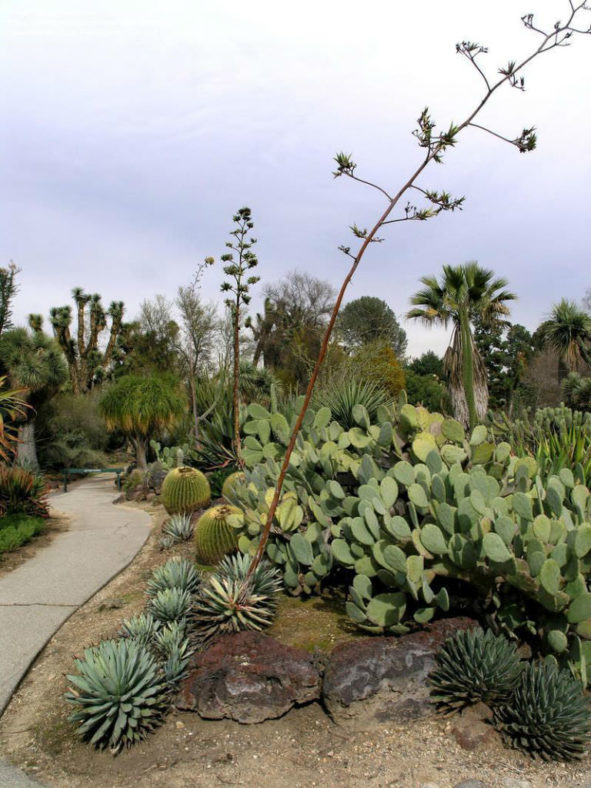Scientific Name
Agave macroacantha Zucc.
Common Name(s)
Black-spined Agave
Synonym(s)
Agave besseriana, Agave flavescens var. macroacantha
Scientific Classification
Family: Asparagaceae
Subfamily: Agavoideae
Genus: Agave
Etymology
The specific epithet "macroacantha" (pronounced "mak-roh-uh-KAN-tha") means "having large or long spines" and refers to the terminal spines of the leaves of this species.
Origin
Agave macroacantha occurs naturally in Oaxaca and near Tehuacán in Puebla, Mexico.
Description
Agave macroacantha is a slow-growing succulent that forms dense clumps of stemless or short-stemmed rosettes of narrow, glaucous blue-green leaves with dark brown, irregularly spaced teeth and an almost black terminal spine. The rosettes can reach a diameter of 16 inches (40 cm). The leaves are thick, fleshy, and sword-shaped, measuring up to 14 inches (35 cm) in length and 1.2 inches (3 cm) in width. The terminal spine can grow up to 1.2 inches (3 cm) long.
The mature rosette, at least 15 years old, produces a slender inflorescence that is branched in the upper 1/4 and bears clusters of green flowers with a purple tinge. The inflorescence can grow up to 6.6 feet (2 m) tall. The flowers can measure up to 2.2 inches (5.5 cm) long, with a fusiform shape and an ovary up to 1.2 inches (3 cm) long. The fruits are oblong, dark brown capsules with triangular, dull black seeds. They can grow up to 1.8 inches (4.5 cm) long and up to 0.8 inches (2 cm) in diameter. When the rosette begins to flower, the center leaves take on an attractive reddish hue.
Hybrids

Hardiness
USDA hardiness zones 9a to 11b: from 20°F (-6.7°C) to 50°F (10°C).
How to Grow and Care
Agave is not a difficult plant to grow. They are slow-growing and dramatic and will even thrive on a bit of neglect. If you're the type of person who likes to fuss with houseplants and water a lot, Agave is probably not the plant for you. On the other hand, if you're the type of person who likes to set it and forget it, and you have a sunny window, Agave might be the way to go. Be aware that some large varieties will eventually outgrow your room (unless you have a large greenhouse), and Agave can be aggressive. They have irritating sap and sometimes very sharp thorns that can cause injuries to small children and even pets.
In general, Agaves do not need to be repotted every year. This is because most species commonly found in cultivation grow very slowly and take a long time to outgrow their pot.
See more at How to Grow and Care for Agave.
Links
- Back to genus Agave
- Succupedia: Browse succulents by Scientific Name, Common Name, Genus, Family, USDA Hardiness Zone, Origin, or cacti by Genus
Photo Gallery
Click on a photo to see a larger version.

